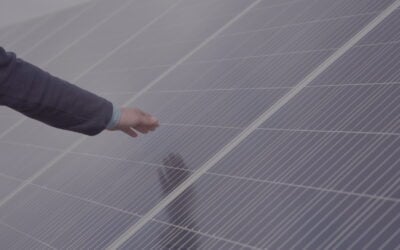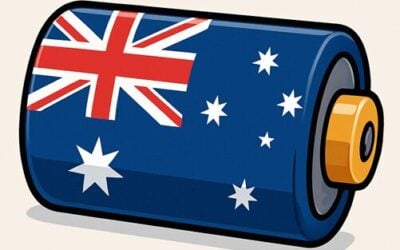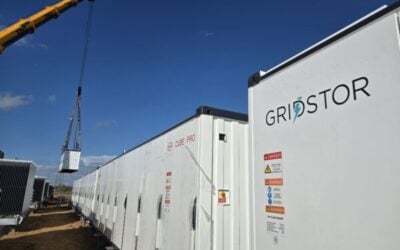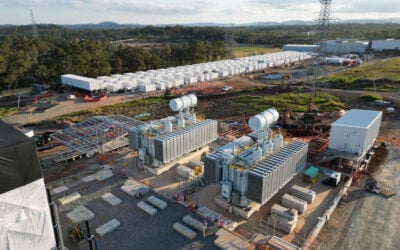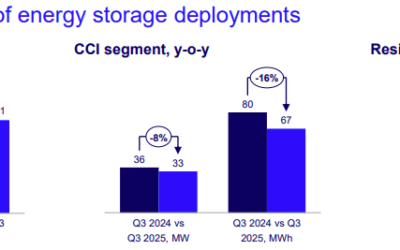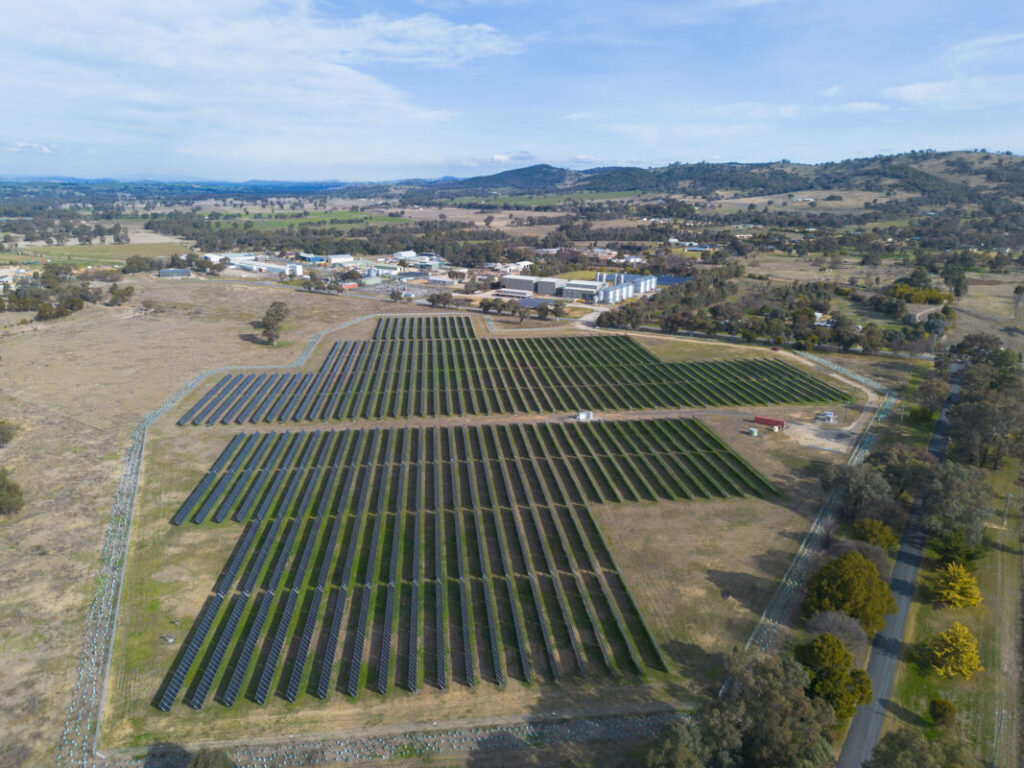
Flow Power’s chief operating officer, Byron Serjeantson, believes solar-plus-storage projects are bridging the gap in renewable energy generation coverage and represent an upcoming trend in Australia’s power purchase agreement (PPA) market.
“As Australia’s energy market continues to transition, there is a growing need and opportunity for renewables that can be more flexible and responsive to market volatility,” Serjeantson said.
This trend identified by Serjeantson has seen the Australian energy retailer yesterday (1 October) announce its intention to add a DC-coupled battery energy storage system (BESS) to its 5.8MW Cootamundra solar PV power plant in New South Wales.
With works set to begin in 2025, Flow Power will add the co-located BESS to the project, enabling it to store the energy generated from the 8,000 solar PV modules during periods when demand and prices are low. This energy will then be exported back to the grid when demand spikes.
Try Premium for just $1
- Full premium access for the first month at only $1
- Converts to an annual rate after 30 days unless cancelled
- Cancel anytime during the trial period
Premium Benefits
- Expert industry analysis and interviews
- Digital access to PV Tech Power journal
- Exclusive event discounts
Or get the full Premium subscription right away
Or continue reading this article for free
Flow Power did not specify the size or duration of the BESS.
The project aims to replicate the success of a similar co-location project, the 5.8MW Berri Energy Project, which includes a 6.7MWh DC-coupled BESS, in South Australia. With a similar solar PV generation size to the Cootamundra project, the project might employ a similar-sized BESS.
“With our South Australian Berri project delivered last year, and another recently completed in Newstead, Victoria, we are really proud of our exceptional team and their ability to pioneer new technologies and solutions to support our customers.”
The Berri project was Flow Power’s first smart solar PV project and its first demonstration of a utility-scale DC-coupled BESS in Australia.
Cootamundra brings Flow Power’s total renewable energy portfolio close to 500MW of owned and contracted wind, solar and storage projects.
Co-location projects in Australia
Co-located solar PV and BESS projects continue to increase in frequency across the Australian market. In early August, renewable energy developer Ark Energy revealed it had submitted a development application for a 500MW project in Myrtle Creek, in north New South Wales.
The project aims to incorporate a 275MW/2,200MWh BESS, which would make it one of the largest to be connected to the National Electricity Market (NEM), which spans southern and eastern Australia. It is located close to existing transmission infrastructure and has been described as a “great location for solar energy”.
Last month, there was a string of co-location announcements in Australia. The first saw the 100MW solar-plus-storage Wallaroo Solar Farm in New South Wales plans approved by the NSW Independent Planning Commission.
Located approximately 1km south of the rural area of Wallaroo, adjacent to the NSW and Australian Capital Territory border, the project will incorporate a co-located 45MW/90MWh BESS.
Alongside this, the Australian arm of Spanish utility and independent power producer (IPP) Iberdrola said it had started building a solar-plus-storage project with a 180MW/260MWh BESS in Queensland.
The Broadsound Solar and Battery, the company’s first project in the state, will feature 376MW of solar PV alongside the co-located BESS. The BESS will capture the energy generated from the solar PV plant and export it to the grid.

